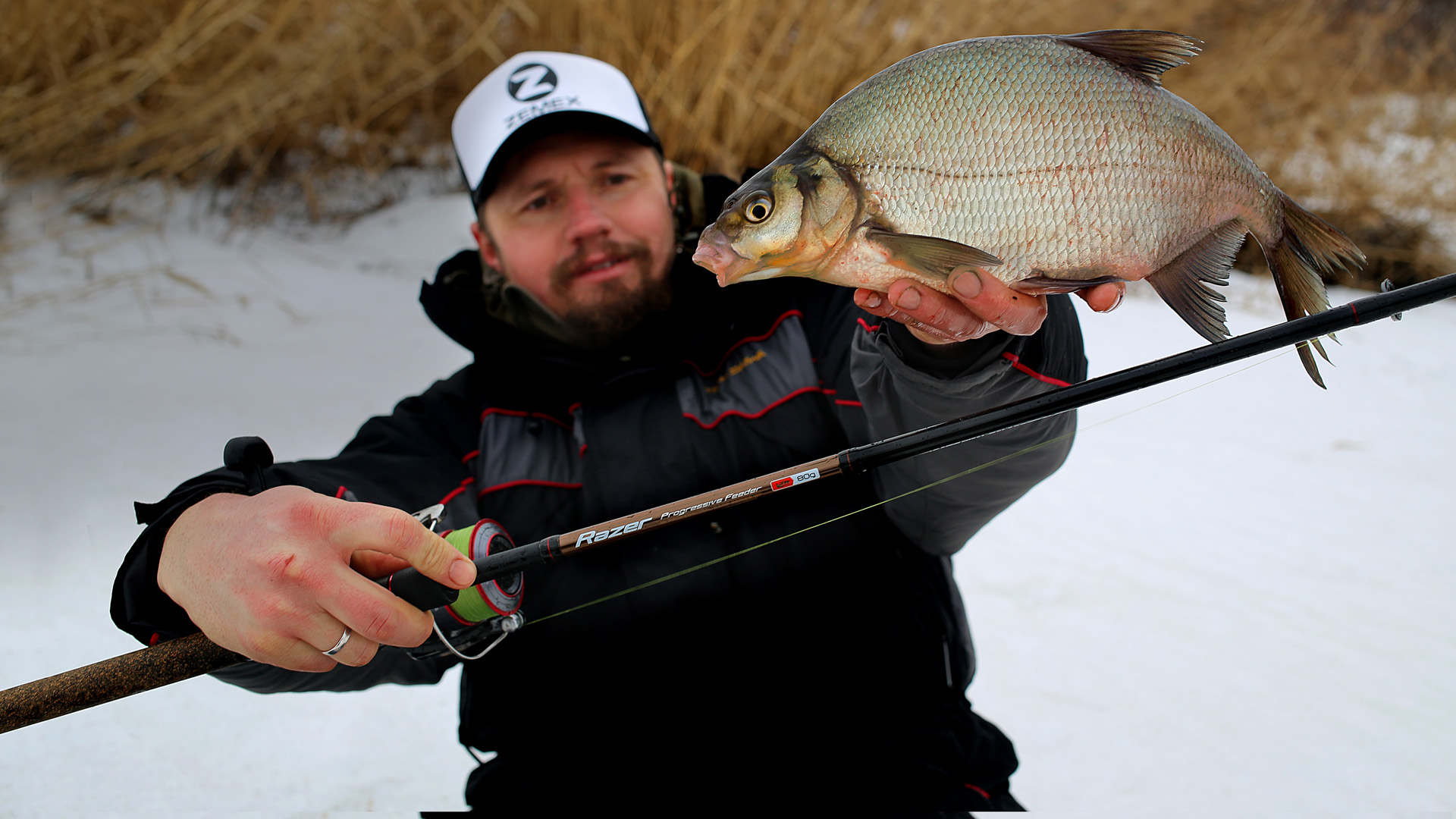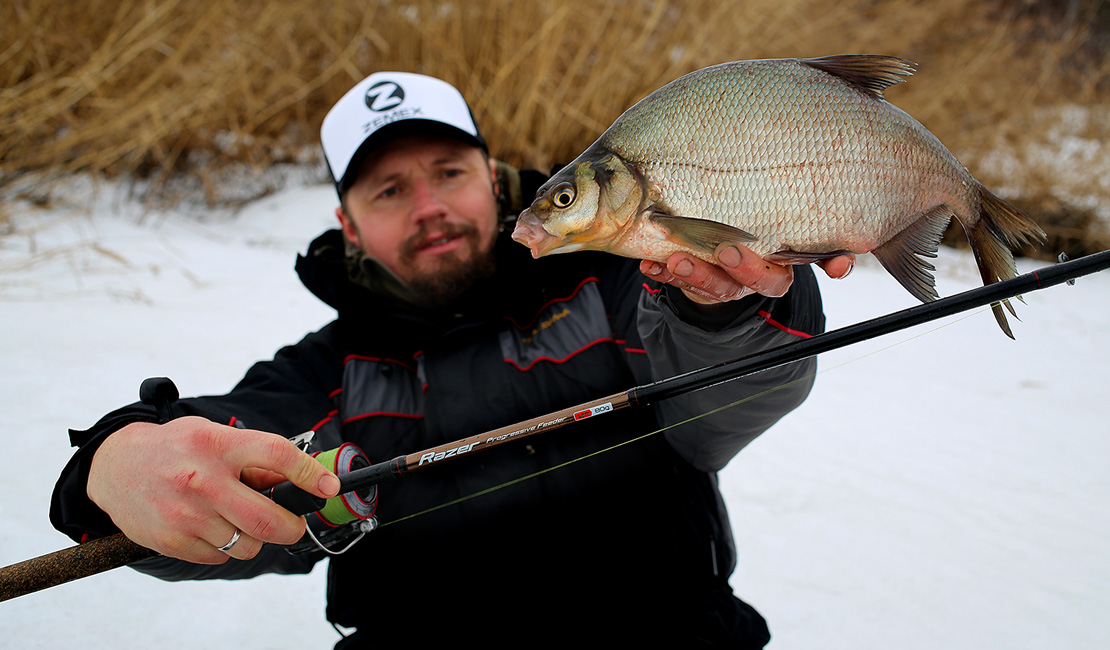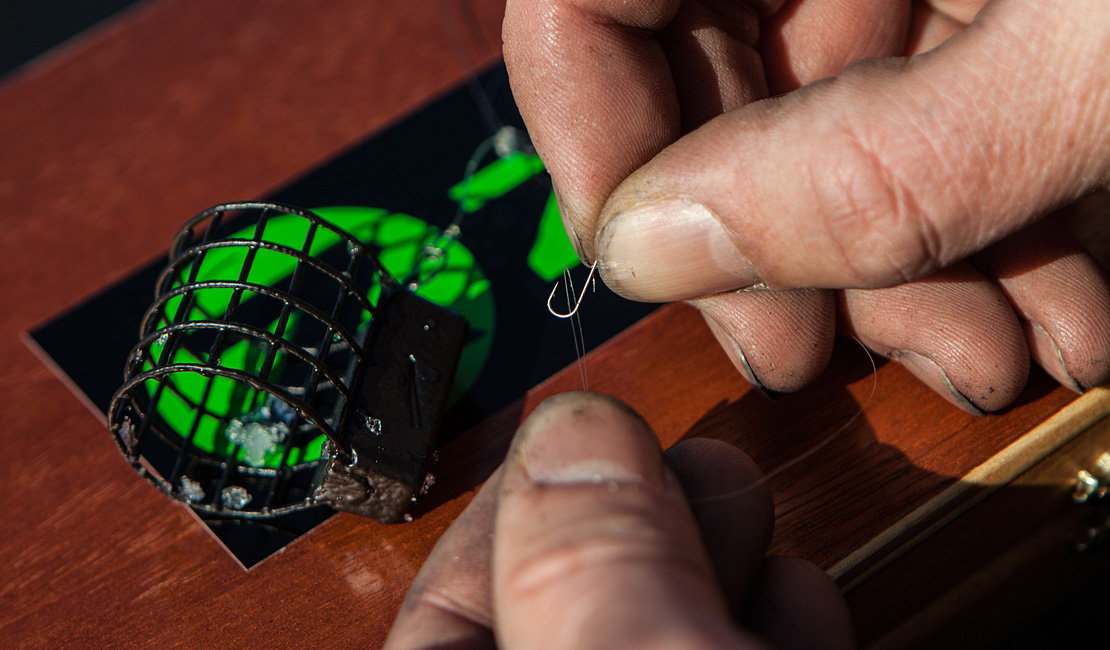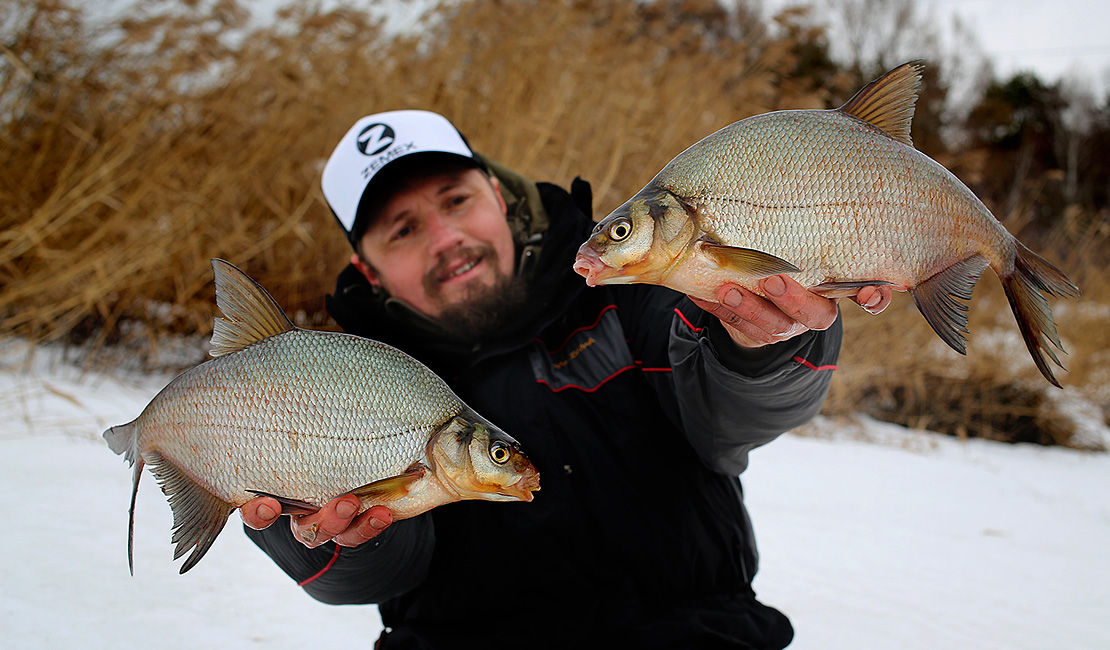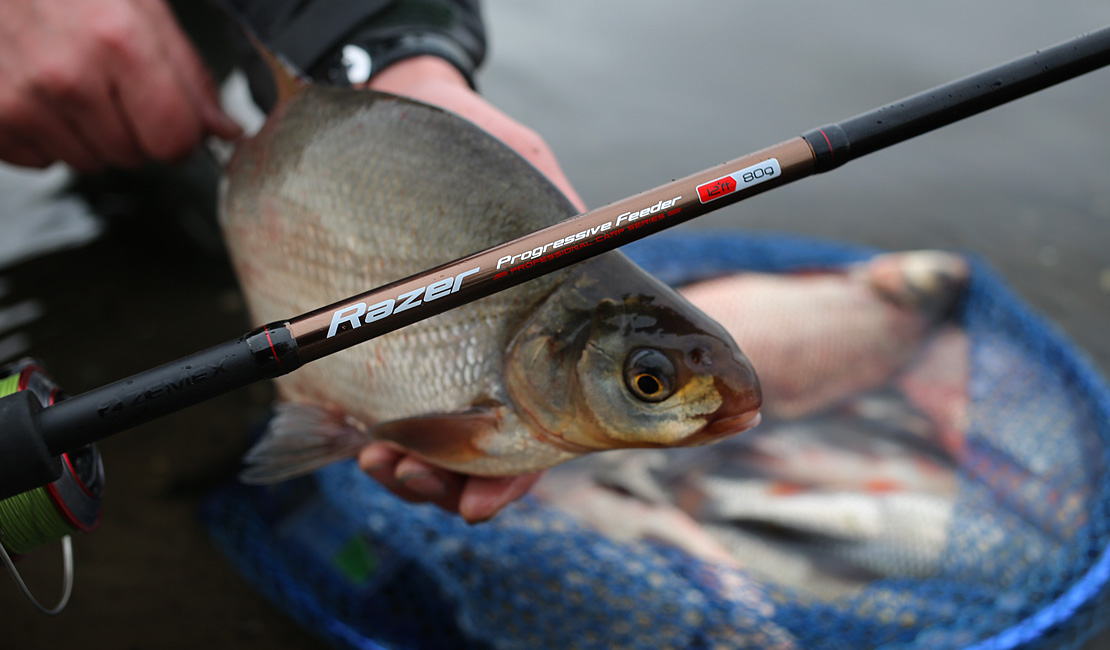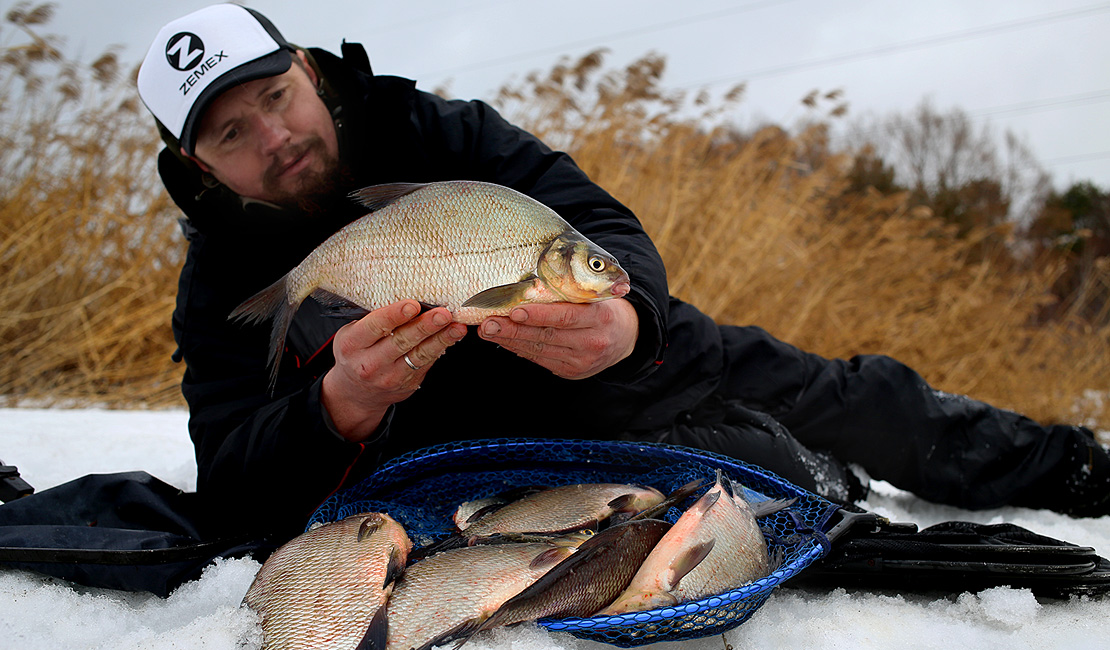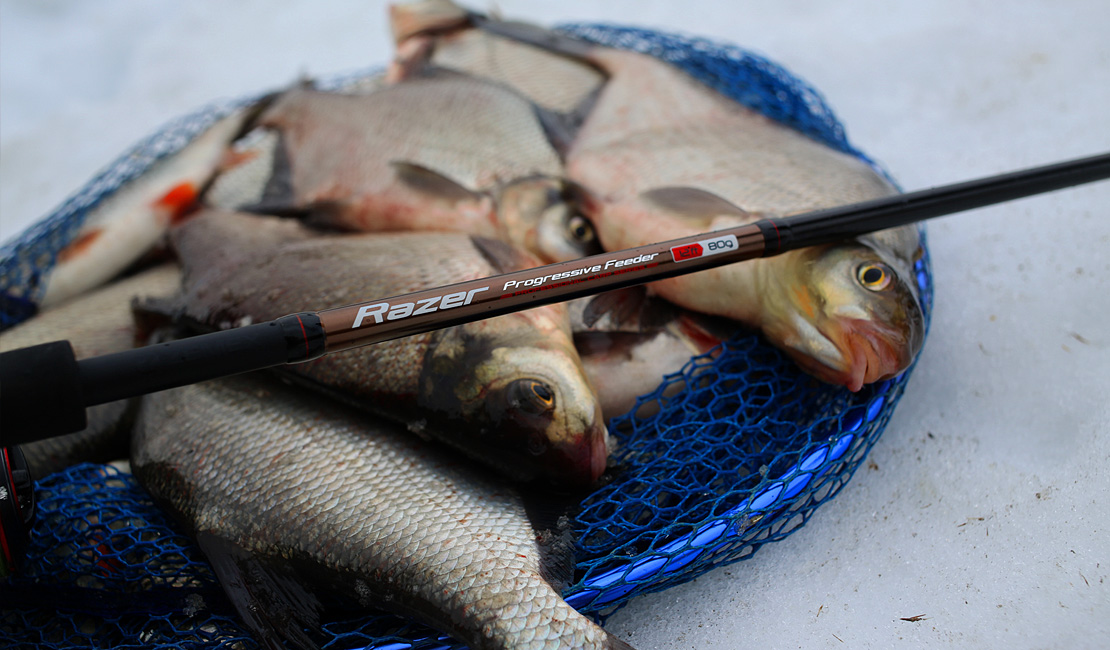Bream fishing with a feeder is probably one of the most striking examples of classic feeder fishing. I especially want to highlight fishing in the winter, when the activity of fish is reduced compared to the summer, but at the same time is not inferior to the excitement of summer fishing. When fishing in winter on rivers with medium and fast currents, bream often adheres to channel edges, which are located at a decent distance from the shore. To fish at such spots, the angler needs to correctly choose a rod that will not only deliver the rig to the bream’s spot, but also allow you to overcome the high river edge, while keeping the fish on the hook. One of these feeder rods is the ZEMEX Razer Progressive Feeder 12ft-80g and the ZEMEX Razer Progressive Feeder 13ft-110g.
Model with a test of up to 80 grams, effective when fishing on low edges. Thanks to its progressive and fast action, this rod makes it possible to make accented casts at medium distances, and successfully apply various types of animation. ZEMEX Razer Progressive Feeder 13ft-110g-is a taller and a better casting model that allows you to successfully fish on high edges, at long distances from the shore. Searching for an edge on the river is quite an ordinary procedure. During stretching along the bottom, the marker sinker rests on the edge, after which the fisherman pulls off a few meters of line and fixes the distance with a clip. This is a basic technique, sometimes you need to step back a little further from the edge, depending on its height and the strength of the current. Having determined the point of fishing, the angler can begin to start feeding.
As a rule, in the winter, small-fraction groundbait of a dark color is used, which does not allow you to overfeed the fish. The volume of maggots, bloodworm and etc, is desirable to match in the process of fishing. If the fish does not respond to any bait on the hook, then it is most likely not worth using it for feeding with groundbait either. It is safe to say that the bloodworm is the most favorite delicacy for bream when fishing in winter. That is why the feeding of the spot should be made with a large volume of bloodworm. This tactic allows you to attract fish in the shortest possible time and create food competition among fish. A large-capacity feeder saves time significantly, and makes it possible to attract hungry breams.
In search of the necessary amount of oxygen and a comfortable temperature, breams can often be in the water column, then going down to the bottom, then lingering at a significant distance from it. Skilled fishermen always take into account these behaviors and make appropriate conclusions. In such circumstances, the use of active bait and frequent casts of the rig at the point of fishing, make it possible to lower breams closer to the feed spot, which is likely to cause them to bite. With such fishing tactics, the best option is to use standard cage feeders that giveout groundbait both at the bottom and create a plume in the bottom layer. Plastic open-type feeders will be an excellent solution for fishing on steep edges. Thanks to their planing properties, they allow you to pass the obstacle, and in combination with the binding properties of the rod, minimize the likelihood oflosing the fish.
While fishing behind the steep brows, there is a need to apply the technique of forced playing the fish. The essence of it is to quickly raise the rod up and at the same time pulling the fish at a high pace, until the rig does not overcome the edge. After overcoming the obstacles, you should play the fish smoothly and accurately. It should be borne in mind that in the cold season bream shows special caution, so the use of delicate rigs is a very important component of fishing.
In such conditions, the diameters of hooklines rarely exceed 0.1 mm, and the main sizes of hooks according to the European classification do not exceed 14. The length of the hookline depends on the nature of the fish's behavior. Often a classic feeder hookline is no more than a meter long with a bunch of bloodworms on the hook is the best choice, but there are times when you have to use hooklines of one and a half meters or more, using only one bloodworm on the hook.
In cold weather, it is extremely rare to get on a stable bream fish rising. As a rule, fish is active in short periods of time, after which it is necessary to re-feed the fishing spot. Fishing with a feeder for winter bream is not easy. The angler has to take into account a lot of details, carefully select the equipment, bait, and fishing spot, but in the end the reward is the bite of the desired trophy! And, of course, do not forget about good gear, which is an essential attribute of modern fishing!
Tell your friends about us:
